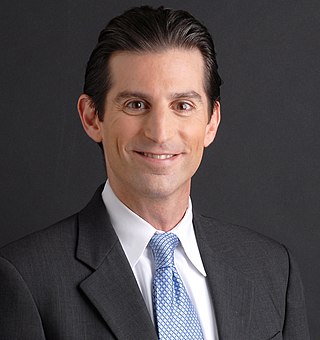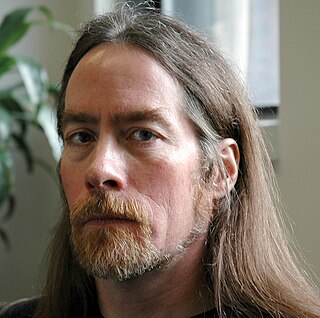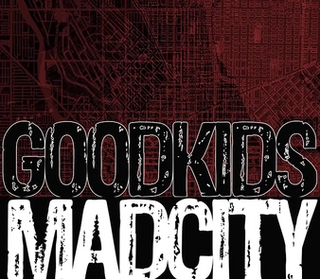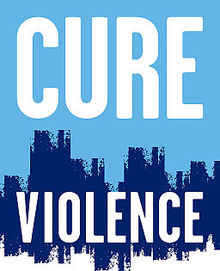
Rod Blagojevich, often referred to by his nickname "Blago", is an American politician who served as the 40th governor of Illinois from 2003 to 2009. He was impeached, removed from office, convicted, and incarcerated for eight years on federal charges of public corruption. A member of the Democratic Party, Blagojevich previously worked in both the state and federal legislatures. He served as an Illinois state representative from 1993 to 1997, and the U.S. representative from Illinois's 5th district from 1997 to 2003.

The Chicago Police Department (CPD) is the primary law enforcement agency of the city of Chicago, Illinois, United States, under the jurisdiction of the Chicago City Council. It is the second-largest municipal police department in the United States, behind the New York City Police Department. As of 2022 CPD had 11,710 sworn officers on duty, and in 2020 had over 948 other employees. Tracing its roots to 1835, the Chicago Police Department is one of the oldest modern police departments in the world.

Humboldt Park, one of 77 designated community areas, is on the West Side of Chicago, Illinois. The Humboldt Park neighborhood is known for its dynamic social and ethnic demographic change over the years. The Puerto Rican community has identified strongly with the area since the 1970s. Humboldt Park is also the name of a 207-acre (0.8 km2) park adjacent to the community area.

Michael Joseph Madigan is an American politician who is the former speaker of the Illinois House of Representatives. He was the longest-serving leader of any state or federal legislative body in the history of the United States, having held the position for all but two years from 1983 to 2021. He served in the Illinois House from 1971 to 2021. He represented the 27th District from 1971 to 1983, the 30th district from 1983 to 1993, and the 22nd district from 1993 to 2021. This made him the body's longest-serving member and the last legislator elected before the Cutback Amendment.

Iris Y. Martinez is an American politician and administrator. In 2020, she was elected clerk of the Circuit Court of Cook County. She previously served as a member of the Illinois Senate, representing the 20th district from 2003 until becoming clerk. A member of the Democratic Party, she rose to Assistant Majority Leader in the State Senate. As court clerk and as a state senator, she is the first Latina to have held either of those offices.
Operation Ceasefire (also known as the Boston Gun Project and the Boston Miracle) is a problem-oriented policing initiative implemented in 1996 in Boston, Massachusetts. The program was specifically aimed at youth gun violence as a large-scale problem. The plan is based on the work of criminologist David M. Kennedy.
Crime in Chicago has been tracked by the Chicago Police Department's Bureau of Records since the beginning of the 20th century. The city's overall crime rate, especially the violent crime rate, is higher than the US average. Gangs in Chicago have a role in the city's crime rate. The number of homicides in Chicago hit a 25-year high in 2021.
The Milton S. Eisenhower Foundation is a non-governmental organization in the United States, established in 1981 to continue the work of two Presidential Commissions. These commissions were the bipartisan National Advisory Commission on Civil Disorders, and the bipartisan National Commission on the Causes and Prevention of Violence. The Eisenhower Foundation carries forward the objectives and initiatives of these commissions in the private sector.

David H. Hoffman is a former federal prosecutor and was Chicago's inspector general. Hoffman ran for the Illinois seat of the U.S. Senate in 2010 but lost to Alexi Giannoulias in the Democratic primary.

The Interrupters is a 2011 documentary film, produced by Kartemquin Films, that tells the story of three violence interrupters who try to protect their Chicago communities from the violence they once employed. It examines a year in which Chicago drew national headlines for violence and murder that plagued the city.

David M. Kennedy is an American criminologist, professor, action researcher, and author specializing in crime prevention among inner city gangs, especially in the prevention of violent acts among street gangs. Kennedy developed the Operation Ceasefire group violence intervention in Boston in the 1990s and the High Point Model drug market intervention in High Point, North Carolina, in 2003, which have proven to reduce violence and eliminate overt drug markets in jurisdictions around the United States. He founded the National Network for Safe Communities in 2009 to support cities using these and related strategies.

Police reform in the United States is an ongoing political movement that seeks to reform systems of law enforcement throughout the United States. Many goals of the police reform movement center on police accountability. Specific goals may include: lowering the criminal intent standard, limiting or abolishing qualified immunity for law enforcement officers, sensitivity training, conflict prevention and mediation training, updating legal frameworks, and granting administrative subpoena power to the U.S. Department of Justice for "pattern or practice" investigations into police misconduct and police brutality.
The Humboldt Park riot was the second major conflict between Puerto Ricans in Chicago and the Chicago Police Department. The riot began on June 4, 1977, and lasted a day and a half. Following the shooting deaths of two Puerto Rican men, locals battled Chicago police officers in Humboldt Park and in the streets surrounding. The riot led the community to hold the Division Street Puerto Rican Day Parade, which started in 1978.

After School Matters is a non-profit organization that provides Chicago high school teens with after-school and summer opportunities. It offers project-based after-school and summer programs in the arts, communications and leadership, sports and STEM.

The 1927 Chicago mayoral election was held on April 5, 1927. Democratic incumbent William Emmett Dever was defeated by Republican candidate William Hale Thompson, who had served as mayor from 1915 to 1923. John Dill Robertson, who had been previously allied with the ex-mayor, broke with Thompson to run on his own and received more than five percent of the vote. It remains as of 2023 the last Chicago mayoral election to be won by a candidate who is not a member of the Democratic Party.

Lori Elaine Lightfoot is an American politician and attorney who was the 56th mayor of Chicago from 2019 until 2023. She is a member of the Democratic Party. Before becoming mayor, Lightfoot worked in private legal practice as a partner at Mayer Brown and held various government positions in Chicago. She served as president of the Chicago Police Board and chair of the Chicago Police Accountability Task Force. In 2019, Lightfoot defeated Toni Preckwinkle in a runoff election for Chicago mayor. She ran again in 2023 but failed to qualify for the runoff, becoming the city's first incumbent mayor to not be reelected since Jane Byrne in 1983.

Brandon Maurice Scott is an American politician serving as the mayor of Baltimore, Maryland, since 2020. He was the president of the Baltimore City Council from 2019 to 2020, having been elected to the position to replace Jack Young following Catherine Pugh's resignation, as well as a member of the Baltimore City Council from the second district from 2011 to 2019. A member of the Democratic Party, Scott was a candidate for Lieutenant Governor of Maryland during the 2018 Maryland gubernatorial election, in which he ran on a ticket with Jim Shea.

In the United States, "defund the police" is a slogan that supports removing funds from police departments and reallocating them to non-policing forms of public safety and community support, such as social services, youth services, housing, education, healthcare and other community resources. Activists who use the phrase may do so with varying intentions; some seek modest reductions, while others argue for full divestment as a step toward the abolition of contemporary police services. Activists who support the defunding of police departments often argue that investing in community programs could provide a better crime deterrent for communities; funds would go toward addressing social issues, like poverty, homelessness, and mental disorders. Police abolitionists call for replacing existing police forces with other systems of public safety, like housing, employment, community health, education, and other programs.
A credible messenger program is a social program that employs accepted members of a community to aid and influence others in the community, usually intended to reduce violence. American cities have used this approach to address gang and gun violence in cities, in which community members who share lived experiences with perpetrators of violence work directly with those individuals to change their perspective on violence and provide public programming to change community norms around violence. The groups often patrol areas, similar to beat cops, but without guns or ability to arrest.

GoodKids MadCity Englewood (GKMC-E) is a 501(c)(3) nonprofit organization based in the Englewood neighborhood of Chicago, Illinois. It was founded by Chicago youth in 2018 with the aim to be an anti-gun violence group. GKMC-E organizes youth engagement events, community service projects, and conducts workforce development programs.















